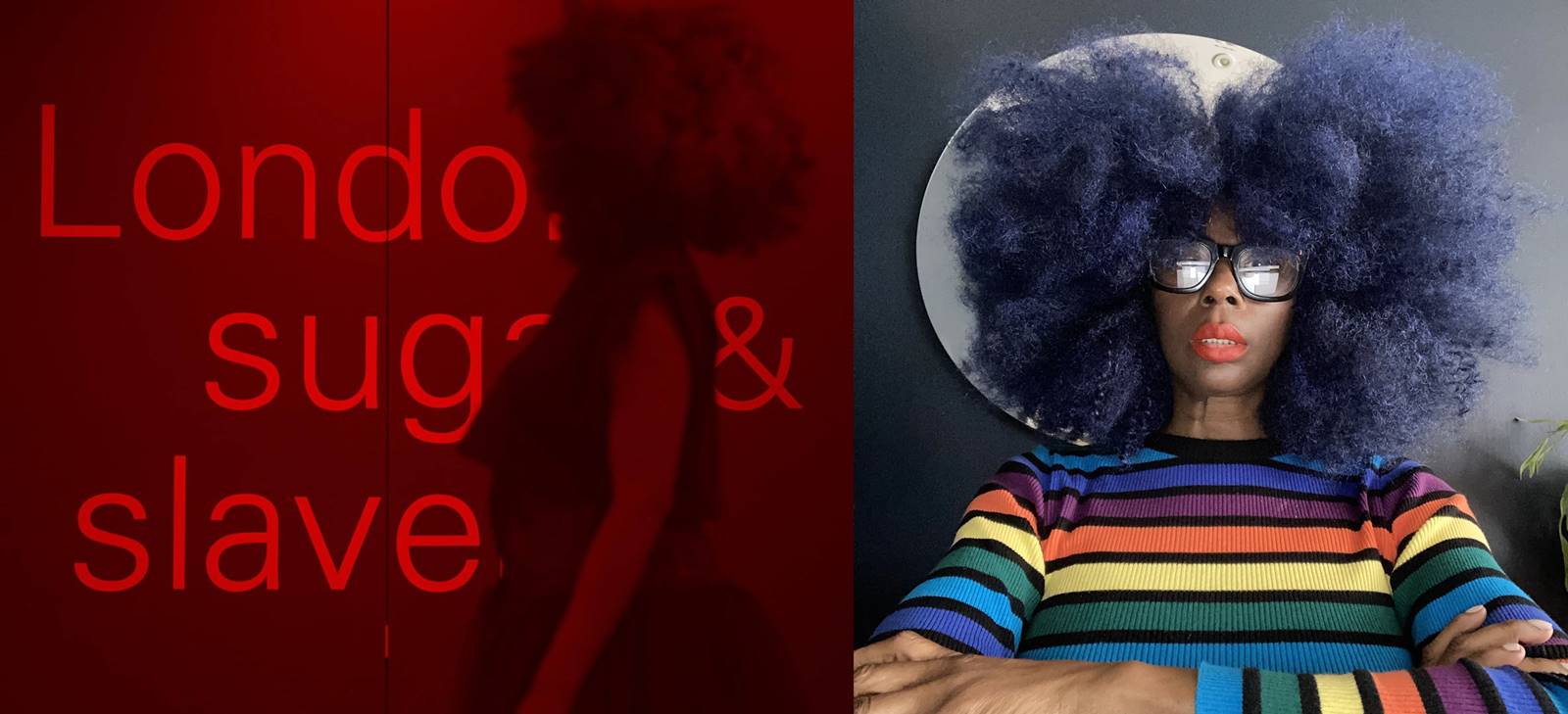Watch: Living in the Wake of the Lust for Sugar
What’s missing in the Museum of London Dockland’s ‘London, Sugar and Slavery’ gallery? Artiste and activist Elsa James' film explores those untold stories.
In 2023, the museum invited Essex-based artiste and activist Elsa James to respond to its London, Sugar and Slavery gallery with a disruptive intervention. Through her work, James took this opportunity to raise questions such as ‘Who was permitted to tell these stories in this setting?’ ‘Who controls the narrative?’ among many others.
The outcome, the production of a 7-minute film James titled Living in the Wake of the Lust for Sugar, was conceived after two weeks of research at the gallery. James describes this research process as spontaneous and intuitive, unlike her usual methods of carrying out a more extended period of in-depth research prior to creating a new piece of work.
“My starting point for responding to the gallery was to embed my personal connection to the history of the transatlantic slave trade. However, I was also curious to explore and imagine what a response to the gallery would look like from the perspective of the enslaved African voice, which I found missing from the entire gallery interpretation,” says James.
Watch the film here, and click here for the transcript.
James is a British African-Caribbean conceptual artiste and activist based in Essex. She works across live performance, film, prints, spoken word, neon and sound, exploring the historical, temporal and spatial dimensions of what it means to be Black in Essex.
Named one of 50 most influential people in Essex in 2022, James’ work has been shown across London (from Tate Britain to South London Gallery), the UK (Colchester and Southend) as well as at the RadicalxChange Conference, New York (2020).
A finalist for the Freelands Award (2021) and a recipient of the Henry Moore Foundation Artists Award (2023), James’ work is held in private and public collections. This includes the Government Art Collection and Beecroft Art Gallery, for which she became the first female Black British artist to be acquired into the gallery’s collection.
The Museum of London Dockland’s London, Sugar and Slavery gallery was established in 2007 to document the social, cultural and economic impact of Britain’s lust for sugar in the Caribbean. “The aim was to re-examine the existing narrative of the gallery, which was created in 2007, by expanding its interpretation with an artistic perspective connected to the audience that the gallery represents… For an institution like ours, the accuracy of her [James] vision, the finesse of her thinking, are precious tools to offer a new narrative on heritage and identity,” says Jean-Francois Manicom, Senior Curator (Docklands History and Legacies).









